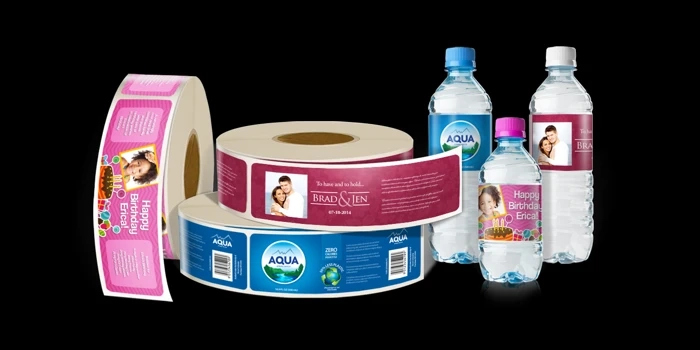Creating custom labels for your products can be great for differentiating your brand from the competition. As part of a broader branding campaign, bespoke labelling can give you the opportunity to gain a competitive edge.
Successful product labelling means prioritising two things – uniqueness and recognition. Our product labels need to be 100% unique and instantly recognisable as belonging to your brand.
Once you have come up with a vision for your perfect product labels, the logistics of bringing them to life are quite straightforward. But it is important to be aware of the various decisions you will need to make along the way in terms of things like material types and adhesion strength.
If in doubt, you can always consult with your label supplier for their recommendations.
Here is a brief look at the four-step process of breathing life into creative custom product labels:
Label TypeYou will need to decide on the exact types of labels you would like to order. Do they need to be printed on a roll, or on individual pieces of material already cut to size? Would you prefer labels in a standard square or rectangle configuration, or are you looking for something more distinct and creative?
Then there is the choice between die-cut stickers and kiss-cut stickers – both with their own unique points of appeal. Bespoke labels can be printed and cut in any shape, size and configuration imaginable.
Hence, if your goal is to make your products stand out from those of your competitors, it pays to bring a little imagination and innovation into the design process.
The VisualsSpeaking of which, there really is nothing you cannot do in terms of the visual presentation of your labels. Depending on what you sell (and how you brand your business), simple monochromatic text on a plain background can be highly impactful. Elsewhere, the use of eye-catching images and elaborate 3D effects can be just the thing for other products and businesses.
The best place to start is with a look at your wider branding strategy and your marketing materials. Try to make sure that all of your trademark colours are incorporated into your product labels. Use the same fonts and typefaces, while ensuring all text on the label is easy to read.
Step back from your draft design and take a look at it from the perspective of your target customer. Does it stand out on the shelf for all the right reasons and what kind of first impression does it convey? The more product labels you plan to print, the more satisfied you need to be with the design before taking things to the next step.
Material and TackTwo equally important things – the first of which is the material choice. Different labelling materials are compatible with different surfaces and environments. For example, if you sell refrigerated frozen products, your labels will need to be much more durable than those for products stored at ambient temperatures.
Likewise, different materials bring a different feel of luxury and sophistication to product labels. Textured paper, embossing, metallic and reflective materials are all great for adding something distinctive to your products.
The durability (and viability) of your labels will also be influenced by the adhesive coating on the underside. There are countless different types of adhesive and tack levels to choose from. Some labels are designed to stick in place permanently, while others are engineered to be peeled away without leaving a trace of sticky residue behind.
Again, it depends entirely on the types of products you sell, the conditions they will be exposed to and the preferences of your target audience.
Short or Long RunCommissioning a long run of labels before ensuring you are 100% satisfied with their design is a bad idea. Similarly, it is important to check that the product labels you order are fit for purpose. They may look fantastic, but have you actually put them to the test on the products themselves?
If not, it may be better to commission a short run, or perhaps even request a couple of free samples. This will help you determine whether your custom labels are up to the job and will have the desired effect.
After which, longer runs pave the way for significant savings. The more labels you order, the cheaper they become on a per-unit basis. Talk to your supplier about discounts and incentives, then insist on samples before placing an order for an extensive run.
For more information on any of the above or to discuss the benefits of bespoke product labels in more detail, contact a member of the team at Mercury Labels today.


